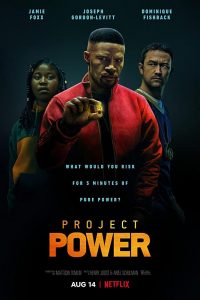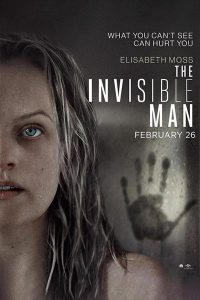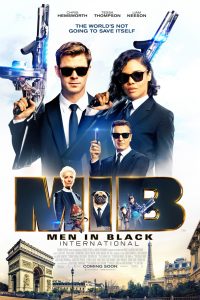“No Easy Way to Be Free”: A Review of The Hunger Games: Catching Fire
 by Gary Westfahl
by Gary Westfahl
Like The Hunger Games (2012) (review here), its wildly successful precursor, The Hunger Games: Catching Fire is a film that makes few demands on its expected audiences of young viewers. They are expected to bond with plucky heroine Katniss Everdeen (Jennifer Lawrence), whose affections are intriguingly torn between sweet boy-next-door Peeta Mellark (Josh Hutcherson) and rugged tall-dark-stranger Gale Hawthorne (Liam Hemsworth). They are expected to despise the evil President Snow (Donald Sutherland), who will obligingly twirl his handlebar mustache and instigate one atrocity after another in order to ensure that he never, ever becomes even a bit likable. They will root for Katniss as she successfully navigates her way through the minefield of perils prepared by Snow’s fiendish minions, and they will leave the theater looking forward to savoring her complete victory over her oppressors in the final two films of the series, scheduled to appear in 2014 and 2015. As in the novel, the film’s climactic iteration of the Hunger Games seems hurried and perfunctory, but the film as a whole could be charitably assessed as harmless, well-made entertainment for America’s youth, who certainly deserve an occasional diversion from the vicissitudes of their stressful lives.
Yet adults have a long history of becoming distressed about each new pastime favored by their children – dime novels, pulp magazines, comic books, monster movies, video games – so some will not be surprised to find an aging reviewer becoming distressed about The Hunger Games: Catching Fire. No, the film will not rot teenagers’ minds or weaken their moral values, but there is a message embedded within its story that subtly undermines its seemingly subversive qualities. The few fans of the series who actually read this review may find my concerns annoying, but they should recognize that annoying children is one of the traditional responsibilities of adults.
In reviewing The Hunger Games, I interpreted its futuristic dystopia as a representation of contemporary America as seen by its younger citizens. Panem is America; the pampered, self-indulgent residents of its capital are America’s adults, conspicuously enjoying the good life that they have designed their government to provide solely for them; and the youths forced into the Hunger Games, and their family members and friends, are America’s children, driven by their cruel overseers into an unfair competition for a similar good life that only a few of them can obtain. The original novel and film further argued that there was really nothing that anyone in either world could do to change the system, save to enjoy a few, fleeting moments of triumph that have no lasting effects. The second novel and film, in contrast, appear to maintain that these sinister societies can in fact be defeated by the dedicated work of bold rebels, who in the course of the story advance from a few spontaneous protests to a well-organized conspiracy to bring down Snow’s government. And, since the conclusion of such a narrative is inevitable, we already know that, with Katniss’s help, they are destined to win their battle and build a new land of freedom and opportunity on the ashes of Snow’s repressive regime.
Of course, there have been many science fiction stories about the overthrow of totalitarian regimes – Robert A. Heinlein’s “‘If This Goes On – ’” (1940) and Sixth Column (1941) immediately come to mind – but since the totalitarian regime presented here is so manifestly similar to today’s America, one might regard The Hunger Games: Catching Fire as a call for immediate and forceful action to correct its inequities. Like Katniss and her cohorts, it seems to say, America’s young people should rise up and take action to reduce profligate spending on the elderly and implement social and economic reforms that would allow youths to finish their education without having to face a lifetime of debt and to find a good, rewarding job that will comfortably support themselves and their families. Yet there is one major flaw in such a reading of this film: its heroine Katniss does not rise up and take action. In fact, other than reacting to events, Katniss doesn’t do much of anything at all.
True, in moments of passion, she is capable of defiant gestures: in The Hunger Games, she shoots an arrow at an indifferent evaluator and defies the conventions of the Hunger Games, and in this film she tries to prevent Gale from being whipped and provocatively hangs a dummy in a noose and writes on it the name of dead Gamemaker Seneca Crane. But she had no idea that anyone would regard her public gestures as an inspiration to rebel against the government; that was entirely an accident. Further, she expresses no desire to resist President Snow and his associates; all she wants to do, it seems, is to continue living with her family, protect her friends, and avoid upsetting Snow, and when that starts to appear impossible, her backup plan is to run away. It is left to others to actually get the revolution off the ground, as the habitual drunkard Haymitch Abernathy (Woody Harrelson), the carefree Gale, and an unexpected person who should remain nameless are all implausibly recast as dedicated revolutionaries who have organized an underground movement and hatched a conspiracy to disrupt the revamped Hunger Games designed to include, and kill off, previous winners like Katniss. In the meantime, other anonymous individuals have engaged in increasingly violent protests against Panem that are escalating into an active rebellion. Yet Katniss, who has effectively done nothing to assist any of these people, will be asked not only to join, but to lead, the hoped-for revolution.
So, Katniss Everdeen will pull out her bow and arrow and fight back if you threaten her or her friends, and she will occasionally muster the courage to say mean things to bad people, but she is otherwise completely passive in the face of an ongoing catastrophe. She is ultimately rewarded for her passivity by becoming the numb beneficiary of other people’s hard work and sacrifices. She is the film’s heroine, its idealized role model for today’s youth, and she is conveying three messages to her young fans:
1. Your society is unfair and corrupt.
2. You can’t, and shouldn’t, do anything about it.
3. If you’re lucky, however, somebody else will do something about it, and then everything will be fine.
And this hardly constitutes a manifesto for revolution.
Pete Townshend said it well in his 1975 song “Slip Kid”: “there’s no easy way to be free.” A successful revolution is a difficult and complicated task, demanding an enormous amount of planning and effort, as well illustrated by “‘If This Goes On –,’” Heinlein’s thoughtful exegesis of everything people would actually have to do to overthrow a powerful dictatorship. Yet Katniss, despite all of the genuine hardships in her life, has implausibly found an easy way to be free; she poses for the camera, and other people are doing all of the work that will actually bring an end to President Snow and his ilk. And who, exactly, are her magically supportive benefactors? This is actually rich: it is the adults in her society who ride to her rescue, even though its adults have also been making her life miserable. Youngsters like Gale and one of Katniss’s allies in the second Hunger Games, Finnick (Sam Calflin), may be providing some help, but all of the heavy lifting in this film’s rebellion is done by adults: the elderly Mags (Anne Cohen) sacrifices herself to save her young friends; Haymitch and his secret ally plan and execute the elaborate scheme that ultimately frees Katniss; and the intellectual Beetee (Jeffrey Wright) devises all of the necessary technology. There may be a reason, then, why Collins, after dedicating the first novel in the series to a fellow author, dedicated Catching Fire to her parents and her parents-in-law; for her story in some respects is a celebration of parents – both actual parents like Katniss’s unnamed mother (Paula Malcomson), who plays a larger role here as her community’s chief healer, and surrogate parents like Haymitch, Mags, Beetee, and Katniss’s dresser Cinna (Lenny Kravitz), who endangers his own position to show how much he appreciates her.
The Hunger Games: Catching Fire thus enhances and deepens the portrait of contemporary American youth and their attitudes provided by the preceding film. Yes, kids today think their society is awful and unjust, and yes, they blame the adults for making it such a mess. Yet instead of doing something about it themselves, they have resolved to patiently wait for the same adults to start cleaning up the mess they made. The film starkly illustrates the paradoxical combination of defiance and dependence that defines so many young people today: they hate adults, but they want adults to help them. They scream at their parents while living in their basements and asking them for loans. Admittedly, though, this may be stating matters too strongly, as one can state the characters’ new proclivity to sympathize with adults in milder terms. As young people grow older (and the protagonists here are all a little bit older), they generally come to recognize that the world is unfair not only to youths, but to many adults as well. Accordingly, the second Hunger Games includes both teenagers and adults, and its younger participants then would naturally come to regard adults, within and outside of the game, as potential allies. Yet allies contribute equally in meeting responsibilities and handling tasks; Katniss seems much too willing to surrender responsibilities to others, doing what she is told to do and letting them handle all of the important stuff, so one is obliged to consider her a pawn in the game instead of a player.
Interestingly, the novel’s Katniss realizes precisely how impotent and useless she has been: in the final chapter, she laments that she has only been “a piece” in a game controlled by others, who did not even inform her about what they were doing. She also understands that Peeta would actually be more important to the success of any revolution, since the novel’s Peeta is an eloquent and persuasive speaker who is very good at manipulating other people. In the film, however, Lawrence’s bizarre facial contortions at the end of the film utterly fail to communicate precisely what she is thinking at the time (trust me, she is not going to win an Academy Award for her performance in this film), and Peeta is portrayed as a complete wimp who apparently lacks any talents at all; even his celebrated ability to bake delicious bread is virtually ignored. His only role in the film is to play Steve Trevor to Katniss’s Wonder Woman, the brainless male ingenue who needs to be periodically rescued by the strong, resourceful heroine (reversing the genders of the classic melodramatic pattern). So, when the novel’s Haymitch tells Katniss that “You could live a hundred lifetimes and not deserve” Peeta, it makes sense; when the film’s Haymitch expresses a similar sentiment, one wonders why he admires the man so much. Eliminating most of Katniss’s frequent expressions of self-doubt in the novel, and her keen understanding of her less than assertive role, may have seemed to filmmakers as a good way to strengthen her character, but the true result is a less admirable heroine; the novel’s Katniss may be disinclined to take meaningful action, but she is smart enough to recognize her limitations. The film’s Katniss is an inert bystander to events who doesn’t seem to fully comprehend her own shortcomings. (I’d also like to know what made somebody think it would be a good idea to have Katniss briefly pose like Jesus Christ on the cross, since only Peeta could possibly regard her as a savior.)
Other differences between the novel and film are inconsequential: an episode in which Katniss meets some rebels in the wilderness, and then must perilously get over a suddenly electrified fence, was entirely removed, and painful boils caused by poisonous gas during the Hunger Games are cured by applying water, not a salve that arrives by parachute. One change provides amusing commentary on the filmmakers’ perception of their audience’s intelligence: the novel ends dramatically when Gale tells Katniss that “There is no District Twelve.” In the film, Gale adds, “It’s all gone,” as if someone feared that, upon hearing the novel’s stark words, some viewers would think: “Oh, so it’s merged with District Eleven?” But overall, there was little need for director Francis Lawrence or writers Simon Beaufoy and Michael Ardnt to change anything in the novel, since its story was already perfectly ready to be filmed, and recalling Collins’s background in writing for television, it is highly probable that it was crafted with a future film in mind. Indeed, Suzanne Collins may someday be recognized as a pioneer in a new literary genre, the prospective screenplay in prose form, or the novelization that is written before the film is made instead of afterwards.
Contemplating how easily Collins’s novels were made into popular films prompts one more thought about their broader impact: in the past, when producers adapted science fiction novels as films, they were apt to choose novels for adults; going decade by decade through the last half of the twentieth century, one recalls The War of the Worlds (1951, based on H. G. Wells’s 1898 novel), Planet of the Apes (1968, based on Pierre Boulle’s 1963 novel), Logan’s Run (1976, based on William F. Nolan and George Clayton Johnson’s 1967 novel), Dune (1984, based on Frank Herbert’s 1965 novel), and The Postman (1997, based on David Brin’s 1985 novel). Yet recent filmmakers are increasingly turning to young adult science fiction novels for source material – either actual juveniles like Jumper (2008, based on Steven Gould’s 1992 novel) (review here)and The Host (2013, based on Stephenie Meyer’s 2008 novel), or juveniles in all but name like John Carter (2012, based on Edgar Rice Burroughs’s 1917 novel A Princess of Mars) (review here)and Ender’s Game (2013, based on Orson Scott Card’s 1985 novel) (review here), and the huge sums earned by The Hunger Games and its sequels will only intensify the trend. Perhaps this is why so many of today’s science fiction writers are shifting over to the young adult market, hoping to win what Gould described as “the lottery” by having a work adapted as a film (interview here), and perhaps they, like Collins, are writing those novels with that film adaptation in mind. However, since contemporary Hollywood is also a corrupt and unfair society, only a few of the worthy competitors, as in Collins’s Hunger Games, will reach the Victor’s Village.








Ender’s Game has been relegated to the “Young Adult” sections of most bookstores, today, especially in the corporate chains, but EG was first published as an Adult novel, back in 1985… I loved EG, the film, but overall, it was at best a modest success, critically, and at the Box Office… Stephanie Meyer’s The Host was published as her first “Adult” novel, not as a Young Adult/Juvenile novel… The film adaptation of The Host was neither a critical nor a commercial success… I thought it was watchable, at least… The success of Harry Potter, Twilight, The Hunger Games, and other popular series books for younger readers has led to the Young Adult and Juvenile sections being the largest genre fiction sections in most bookstores, and other popular series being adapted to film, such as: Percy Jackson and the Olympians, The Mortal Instruments series, the Beautiful Creatures series, The Lorien Legacy series, and the upcoming Divergent series, among others… Only Harry Potter, Twilight, and The Hunger Games have become Blockbuster film series… Previous film adaptations of Adult SF novels and stories were nowhere as successful at the Box Office as the films we have seen since the first Harry Potter premiered in 2001… Billions of $$ have been generated by the top 3 Young Adult series, for both books, and movies… Corporate Hollywood always goes with the money… The Hunger Games: Catching Fire just broke the Box Office record for November, with an estimated $161M in it’s opening weekend… Two more HG films are upcoming… Until the Young Adult Fiction well runs dry, we will see a neverending series of movies based on these works… Hunger Games: Catching Fire is a worthy sequel to The Hunger Games, I was impressed with every aspect of it, and I rate both films highly, as true SF films… My grade for both HG films is “A”…